NEWSLETTER 05
May 2024: Henry Moore sculpture garden, a Paris architecture trip and a favourite spring recipe.
STYLE: BETTY & FRANÇOIS CATROUX
“I knew she was the one for me immediately” says François. “If I missed this one, there was nobody else. I couldn’t miss this one. We’ve been together for 50 years” he continues. “No regrets. But she’s not something . . . normal. She’s a special case.”
Rarely do you get to see a couple age so effortlessly in the public/private eye as Betty and François Catroux. In February 1970, Vogue published Horst's photos of their modern apartment on the Quai de Béthune, designed by Catroux for himself and his wife Betty, whom he met and married in 1967. He would soon become the decorator of choice for aristocrats, moguls, fashion queens and royals, from the Rothschilds to the Santo Domingos. She would soon become Yves Saint Laurent's best friend and muse. I personally stumbled upon Vanity Fair’s profile on the couple, particularly François, in 2016 and quickly was charmed by them and their lasting power for 50 years as fashion/design ‘it couple’ while also being homebodies.
Here we share some images of the couple and their effortless combination of style and design - something that interests me personally as I pivot from working years in fashion to the world of interiors.
KITCHEN: TOMATO TARTE TATIN
With the warmer days and picnics finally back on the cards, we inevitably find ourselves gravitating back to this Eklöf-Grey Rage family favourite. We’re big fans of Anna Jones’ cookbooks, and this tomato tarte tatin is one of her show-stoppers.
Whilst not difficult per se, be warned that this isn’t a quick recipe to whip up; as for the best results you’ll want to slow-roast the tomatoes for a few hours. Ideally do this the day before or overnight. For one tarte, you’ll need:
1kg good, ripe tomatoes
3 red onions, sliced
1 pack of butter puff-pastry
1 tablespoon red wine vinegar
1 teaspoon brown sugar or runny honey
A small bunch of thyme or oregano
1 egg, beaten
50g baby capers
First, halve the tomatoes and place them cut-side up on a baking tray. Season with salt, pepper and olive oil, before baking at 100°C for 3-4 hours. You may need to remove smaller ones earlier, so do keep an eye on them. Let cool slightly.
Next, make the caramelised onions. Heat up olive oil over medium heat, add the sliced onions and cook for 10 minutes. Then add vinegar, sugar (or honey), oregano leaves, salt & pepper. Cook for 30-40 minutes until soft and sticky.
Butter a 24cm tarte dish or cast-iron frying pan and arrange the tomatoes cut-side down tightly together. Scatter the caramelised onions on top.
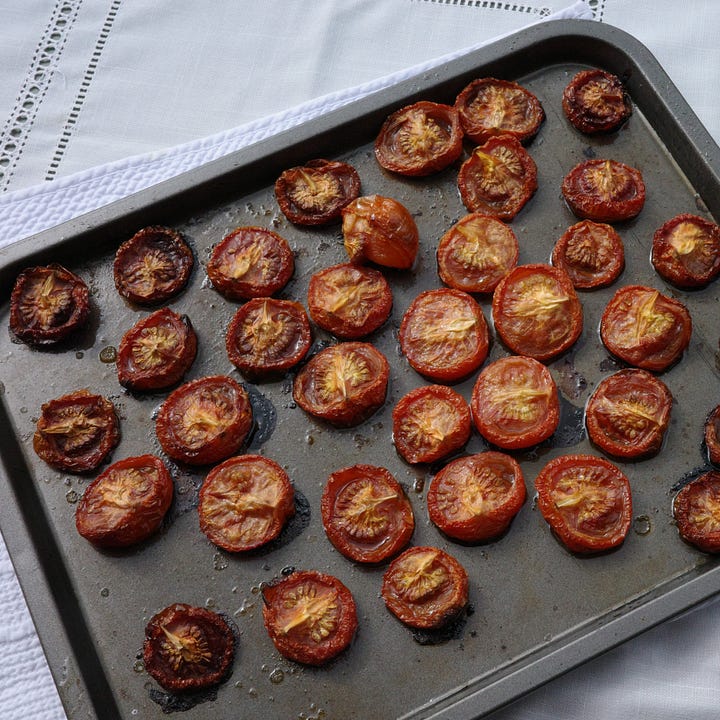
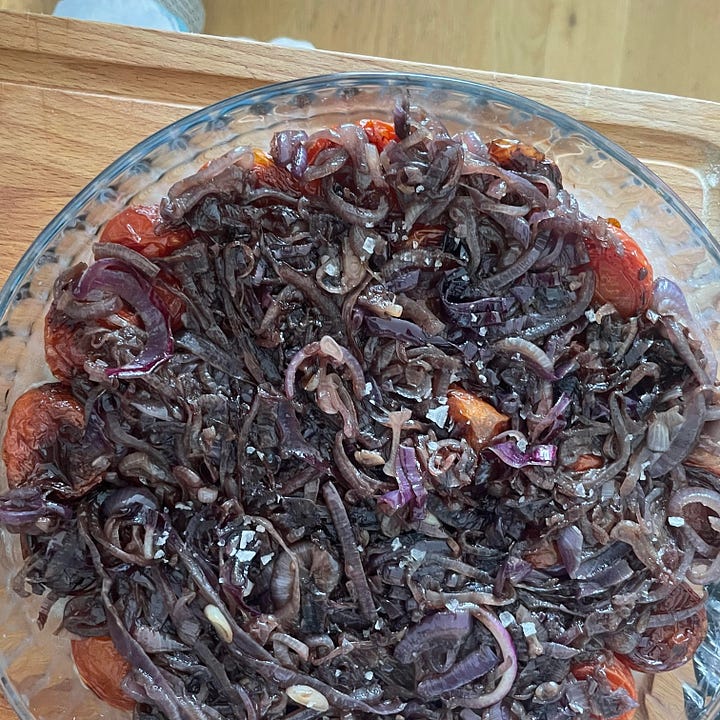
Roll out the puff pastry to about 1cm thick before cutting a circle slightly larger than the pan. Lay it over the onions and tuck in the sides.
When you are ready to cook, preheat the oven to 200°C. Brush the pastry with a beaten egg and bake for 25-30 minutes until golden and bubbling.
While the tart cooks, fry the capers for 30 seconds in hot olive oil until crisp, then drain on kitchen paper. Once the tart is golden, take it out of the oven and let it sit for five minutes. Run a knife around the edge to unstick it,, and turn onto a plate. Scatter capers over tart before serving. Not in the original recipe, but we love to add a few anchovies on top for more umami!
ART: HENRY MOORE STUDIOS & GARDENS
Exciting art-based day excursions from London don’t always come easy. Last year for the May bank holiday, we took off with our friend Geoffrey to rural Hertfordshire, about 45 kilometres north of London, for a visit to the sculpture gardens of artist Henry Moore - and we think you might like it too.
Moore was one of the 20th century most influential sculptors, famous for his semi-abstract monumental bronze sculptures. His art is characterised by organic shapes, smooth contours, and an exploration of the human (mostly female) form. He was also deeply influenced by non-Western art, particularly ancient and primitive sculptures from Africa, Oceania, and pre-Columbian America.
You’d no doubt have encountered one of his sculptures in public spaces in the UK or abroad: he strongly held the belief that art should be accessible to all. As such, he often accepted public commissions, creating large-scale sculptures for parks, plazas, and public buildings around the world. He was a contemporary of Barbara Hepworth, whom he met in college; and their styles certainly echo each other.
When he and his wife Irina had to flee their Hampstead home during World War II, they eventually settled in Hertfordshire. With the £300 earnings of the sale of a sculpture, they were able to buy a house and the adjacent gardens - as one does. They ended up living there all their life, extending the land piece by piece and building studios where Moore worked.
Certainly famous for his large-scale bronze sculptures, the visit also showcases his wider repertoire, notably incredible marble and stone carvings. The studios are preserved to give insight into his creative process, with tools, maquettes, and unfinished works on display. I found it particularly interesting there to see how he was a collector of natural objects, like stones, bones and shells, from which he often drew inspiration for his sculptures.
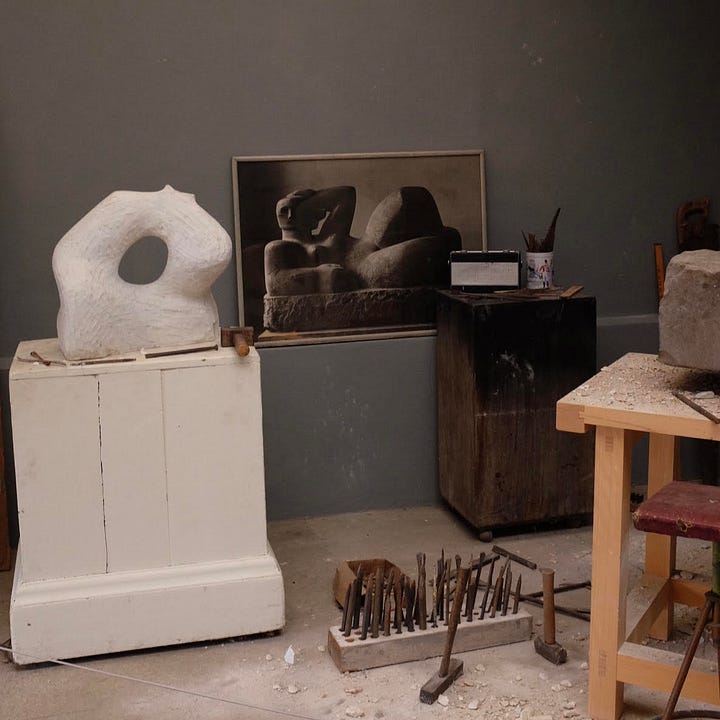
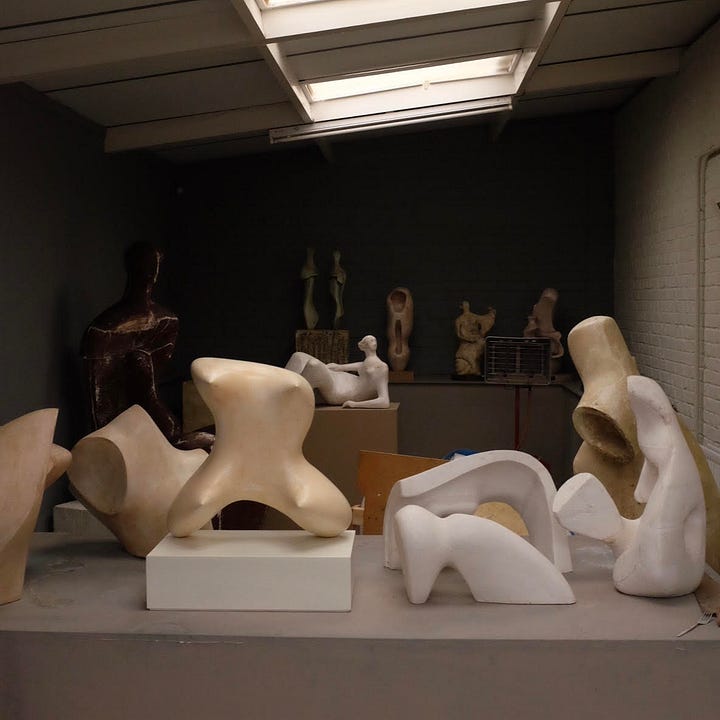
Spread across the expansive grounds, you'll encounter a wide array of Moore's large-scale sculptures displayed in the serene setting of the gardens. Their backdrop perfectly pairs with his organic and monumental works, their smooth contours and fluid shapes. If you have time, afford some for a visit to the family house, which has been preserved as it was during the couple’s lifetime; offering a personal glimpse into their life and Moore’s work environment.
It makes for a great day out, blending art, history and nature. Getting there is a 40 minutes train from London Liverpool Street, followed by a 15 minutes taxi ride. Let us know what you thought!
TRAVEL: MAISON LOUIS CARRÉ
We thought we would celebrate the Spring season reopening with a showcase of the only remaining Alvar Aalto designed building in France. For this, you’ll need to rent a car (probably the easiest) or travel by train just outside of Paris to the tiny village of Bazoches-sur-Guyonne.
This house is truly a testament to the lifelong friendship of Finnish architect Alvar Aalto and Louis Carré - an art dealer, collector and all around appreciator of aesthetics. With a quasi-unlimited budget (the dream!), he had been looking for an architect to build a home for him and his wife, Olga, on the land they had just bought outside of Paris. Apparently afraid of Corbusier’s “concrete” side, Carré liked Aalto’s warmth that he witnessed in the Finnish Pavilion at the Venice Biennale in 1956. He granted Aalto complete freedom, with only two specific requests: to create a spacious interior without appearing imposing externally, and to incorporate a sloping roof instead of a flat one.
Carré being well-connected in the art world, the house works to seamlessly blend public and private spheres, accommodating art exhibitions and social gatherings alongside personal living spaces. Aalto cleverly used mid-height walls instead of doors to block or divert visitors and guide them through the house during these public vernissages.
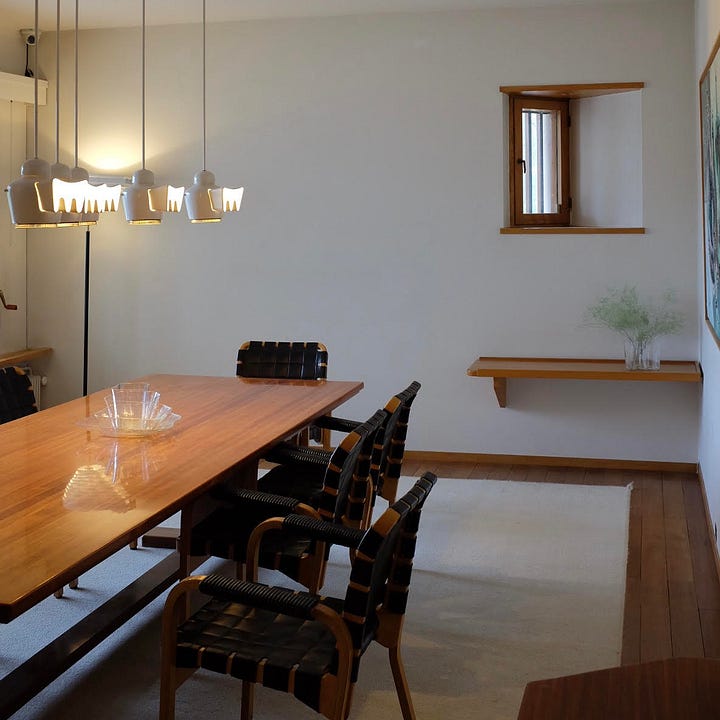
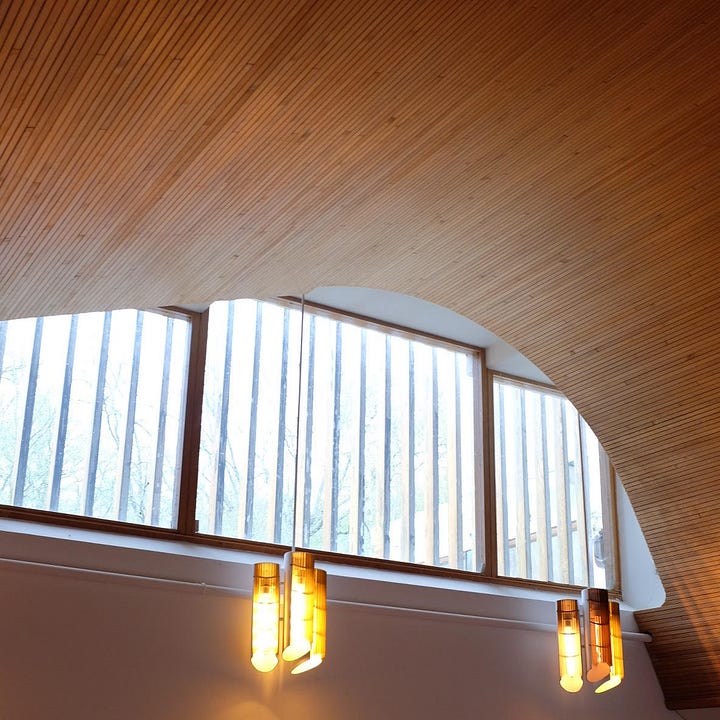
In classic Aalto fashion, expect natural woods used throughout the house - we especially loved the undulating ceiling in the front entrance hall made from Finnish red pine. The daylight is spectacular, flowing in from the large living room horizontal windows and strategically placed openings throughout.
Alvar Aalto meticulously designed every aspect of the house and garden, including furniture, lighting, door handles, and drains. Upon their arrival, Louis and Olga Carré only brought their clothes, books, and artworks; leaving behind all their previous possessions to fit in the gesamtkunstwerk.
Some of the lighting is still in production today through Artek - for example the A338 pendant lights. We also happen to love the Aalto-designed Savoy vases dotted around the house, still produced by Iittala.








